#Scrape Food Delivery App Data
Explore tagged Tumblr posts
Text
Exploring the Uber Eats API: A Definitive Guide to Integration and Functionality
In this blog, we delve into the various types of data the Uber Eats API offers and demonstrate how they can be ingeniously harnessed to craft engaging and practical meal-serving apps.
#Uber Eats Data Scraping API#Scrape Uber Eats Data API#Extract Uber Eats Data#Scrape Food Delivery App Data#Food Delivery App Data Scraping
0 notes
Text
Exploring the Uber Eats API: A Definitive Guide to Integration and Functionality
In this blog, we delve into the various types of data the Uber Eats API offers and demonstrate how they can be ingeniously harnessed to craft engaging and practical meal-serving apps.
#Uber Eats Data Scraping API#Scrape Uber Eats Data API#Extract Uber Eats Data#Scrape Food Delivery App Data#Food Delivery App Data Scraping
0 notes
Text
Kroger Grocery Data Scraping | Kroger Grocery Data Extraction
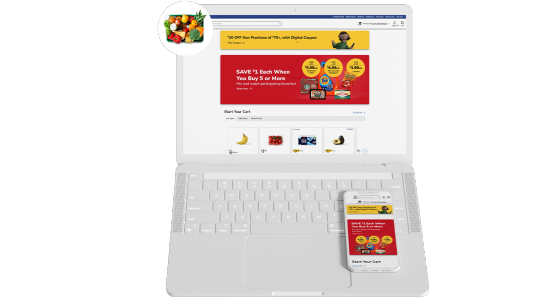
Shopping Kroger grocery online has become very common these days. At Foodspark, we scrape Kroger grocery apps data online with our Kroger grocery data scraping API as well as also convert data to appropriate informational patterns and statistics.
#food data scraping services#restaurantdataextraction#restaurant data scraping#web scraping services#grocerydatascraping#zomato api#fooddatascrapingservices#Scrape Kroger Grocery Data#Kroger Grocery Websites Apps#Kroger Grocery#Kroger Grocery data scraping company#Kroger Grocery Data#Extract Kroger Grocery Menu Data#Kroger grocery order data scraping services#Kroger Grocery Data Platforms#Kroger Grocery Apps#Mobile App Extraction of Kroger Grocery Delivery Platforms#Kroger Grocery delivery#Kroger grocery data delivery
2 notes
·
View notes
Text
Realigning Food Delivery Market Moves with Precision Through Glovo Data Scraping

Introduction
This case study highlights how our Glovo Data Scraping solutions empowered clients to monitor food delivery market trends strategically, refine service positioning, and execute agile, data-backed business strategies. Leveraging advanced scraping methodologies, we delivered actionable market intelligence that helped optimize decision-making, elevate competitiveness, and drive profitability.
Our solutions offered a clear strategic edge by enabling end-to-end visibility into the delivery ecosystem to Extract Food Delivery Data. This comprehensive insight allowed clients to fine-tune service models, sharpen market alignment, and achieve consistent revenue growth through accurate competitor benchmarking in the fast-moving food delivery sector.
The Client
A mid-sized restaurant chain operating across 75+ locations with a rapidly expanding digital footprint reached us with a critical operational challenge. Although the brand enjoyed strong recognition, it faced a noticeable drop in customer engagement driven by gaps in delivery service efficiency. To address this, Glovo Data Scraping was identified as a strategic solution, as service inconsistencies directly impacted their revenue goals and competitive position.
With a broad menu and widespread delivery zones, the restaurant struggled to manage delivery logistics, especially during peak hours when quick shifts in demand required fast action. Their manual approach failed to support Real-Time Glovo Data Scraping, leading to missed revenue opportunities and weakening customer loyalty.
Recognizing the need to refine their delivery strategy, the management team saw that without proper visibility into Glovo’s delivery ecosystem, they lacked the insights necessary for efficient operations and practical customer experience management.
Key Challenges Faced by the Client
In their pursuit of stronger delivery market intelligence and a sharper competitive edge, the client faced several operational and strategic hurdles:
Market Insight Shortage
Limited insights into Glovo's platform and competitors made scraping Glovo Delivery Information difficult, preventing effective market analysis necessary for informed business decisions.
Slow Response Adaptation
Reliance on manual weekly evaluations slowed the restaurant chain's ability to act quickly. Without Glovo Delivery Data Extraction, adapting to real-time market changes became a challenge.
Demand Forecasting Gap
Traditional methods failed to account for real-time delivery data. The restaurant chain needed Glovo Product Data Extraction to predict demand and adjust services based on emerging trends accurately.
Manual Process Overload
Labor-intensive processes hindered efficient service decisions. By applying methods to Scrape Glovo For Product Availability And Pricing, the restaurant chain sought automation to optimize service delivery.
Service Consistency Issue
Inconsistent service quality across zones presented a problem. They required Mobile App Scraping Solutions to streamline operations and ensure consistent service delivery across all customer touchpoints.
Key Solutions for Addressing Client Challenges
We implemented cutting-edge solutions to the client's challenges, combining delivery intelligence with advanced analytics.
Delivery Optimization Engine
We built a centralized platform that leverages Real-Time Glovo Delivery Time Data Extraction to collect live data from various restaurants and delivery zones, enabling efficient decision-making.
Competitor Monitoring System
Our system, designed to Extract Restaurant Menus And Prices From Glovo, quickly identifies service gaps when competitors adjust, giving restaurant chains the edge to adapt promptly.
Dynamic Market Signals
By integrating multiple delivery signals, such as peak hours and weather, with Glovo Scraping For Restaurant Delivery Services, we created flexible models that adjust to market fluctuations.
Automated Service Recommender
Using Real-Time Glovo Data Scraping, we implemented an automated engine that generates service suggestions based on customer feedback and competitive positioning, reducing the need for manual input.
Strategic Adjustment Mechanism
Competitor promotions directly influence our service strategies by using tools to Extract Food Delivery Data, optimizing delivery times and fees while ensuring premium offerings remain profitable.
Cloud-Based Monitoring Hub
A robust Mobile App Scraping Solution enables managers to access and update delivery data remotely, facilitating continuous optimization and transforming strategy management into a dynamic process.
Key Insights Gained from Glovo Data Scraping
Service Elasticity Analysis Revealed delivery time sensitivity across different menu items, offering immediate operational optimization opportunities.
Competitive Positioning Patterns Provided insights into neighborhood-specific delivery differences, supporting targeted service improvements.
Pricing Cycle Optimization Illuminated optimal fee adjustment timing for different meal categories, aiding in more strategic revenue management.
Data-Driven Service Decisions Enabled the implementation of adaptive delivery models based on competitive positioning patterns.
Benefits of Glovo Data Scraping From Retail Scrape
Strategic Boost
By utilizing solutions to Scrape Glovo Delivery Information, the client improved delivery strategies, positioning their services for maximum value, enhancing market responsiveness to competitive shifts.
Loyalty Growth
Using competitor service insights, the client predicted market trends and strengthened customer retention, employing to Extract Glovo Product Data to stay ahead of shifts in demand.
Efficient Operations
The client minimized manual efforts by employing advanced Real-Time Glovo Delivery Time Data Extraction, driving faster decisions and better service while ensuring precise positioning and operational success.
Competitive Edge
With advanced techniques to Scrape Glovo For Product Availability And Pricing, the client gained critical insights into market trends, allowing for service adjustments that boosted profitability in competitive delivery sectors.

Retail Scrape's Glovo Data Scraping solutions revolutionized our approach to delivery market positioning. By gaining comprehensive access to Extract Food Delivery Data insights, we rapidly adjusted our strategy, refined our service models, and achieved a remarkable 37% increase in customer retention.
- Operations Director, Leading Multi-Location Restaurant Chain
Conclusion
Maintaining optimal delivery service positioning is crucial in today's competitive food delivery market. Glovo Data Scraping empowers businesses to monitor competitor services, make informed decisions, and improve market competitiveness.
Our customized solutions offer smooth delivery intelligence and actionable insights, allowing businesses to refine their competitive positioning. With in-depth expertise in Glovo Delivery Data Extraction, we equip businesses with the tools to unlock valuable insights for strategic growth.
Our specialists help evaluate market positioning, refine delivery strategies, and boost profit margins through Real-Time Glovo Data Scraping. Contact Retail Scrape today to minimize service inconsistencies, enhance market positioning, and drive long-term revenue with our advanced food delivery intelligence solutions.
Read more >>https://www.retailscrape.com/glovo-food-delivery-data-scraping-for-market-insights.php
officially published by https://www.retailscrape.com/.
#Glovo data scraping#Glovo delivery data extraction#Scrape Glovo delivery information#Real-time Glovo data scraping#Glovo product data extraction#Extract restaurant menus and prices from Glovo#Real-time Glovo delivery time data extraction#Scrape Glovo for product availability and pricing#Glovo scraping for restaurant delivery services#Extract Food Delivery Data#Mobile App Scraping solution
0 notes
Text
Food Delivery App Scraping Services | Extract Restaurant Menu Data
Elevate your food business with our Food Delivery App Scraping Services. We can extract restaurant menu data from the USA, UK, UAE, Canada, China, India, and Spain.
know more: https://www.mobileappscraping.com/food-delivery-app-scraping-services.php
#Food Delivery App Scraping Services#extracting data from food delivery app#Food Delivery Mobile App Data Scraping#Extract Restaurant Menu Data
1 note
·
View note
Text
🍔💸 #SameRestaurant. #SameDish. #Differentprices.

Confused about why food costs vary across Swiggy, Zomato, and Uber Eats? You're not alone.
At Actowiz Solutions, we help brands, aggregators, and restaurant chains scrape and compare real-time menu prices and offer data across major food delivery platforms.
🔍 Here’s what we reveal: ✅ Dish-to-dish price comparisons across apps ✅ Delivery charges & platform service fees ✅ Discount offers & loyalty program tracking ✅ Menu variation by city, region, or PIN code ✅ Customer sentiment linked to pricing behavior
💡 If you're managing a cloud kitchen, a food delivery app, or a restaurant chain—menu price intelligence can shape your entire revenue strategy.
📥 Ready to uncover hidden pricing gaps and smarter market opportunities?
👉 Explore the insights: https://www.actowizsolutions.com/restaurant-menu-price-comparison.php
#RestaurantMenuScraping#FoodDeliveryData#SwiggyVsZomato#uberEatsInsights#PricingIntelligence#MenuPriceTracking#DeliveryPlatformAnalytics#DynamicPricing#web scraping#data extraction#data scraping#data solutions
1 note
·
View note
Text

🥗 How Can You Extract Vegan/Vegetarian Food Menu Data to Understand Customer Preferences?
With the rising global demand for #PlantBasedOptions, understanding vegan and vegetarian menu trends is essential for #Restaurants, food delivery platforms, #FMCGBrands, and market analysts.
At iWeb Data Scraping, we help businesses extract detailed vegan and vegetarian #FoodMenuData from top restaurants, #QSRChains, delivery apps, and food platforms-empowering you to make data-driven decisions rooted in evolving dietary preferences.
💡 How It Helps:
✅ Identify plant-based food trends across regions
✅ Analyze pricing strategies for vegan/vegetarian dishes
✅ Track innovation in healthy food offerings
✅ Build more inclusive and sustainable menus
✅ Understand customer demand and adapt offerings accordingly
🌱 As consumers become more health-conscious and sustainability-driven, having access to plant-based menu data gives you a competitive edge in #ProductDevelopment, marketing, and menu engineering.
🔗 Discover how we turn menu data into actionable insights:
https://www.iwebdatascraping.com/extract-vegan-vegetarian-food-menu-data-insights.php
0 notes
Text
AI Predicts Cuisine Trends in Singapore’s Food Delivery Market
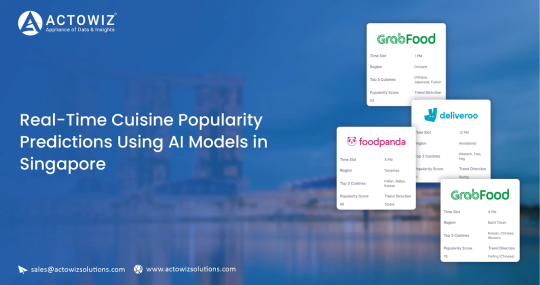
Introduction
Singapore is a melting pot of cuisines—Chinese, Indian, Malay, Western, and more. But in the fast-paced food delivery ecosystem, popularity fluctuates hourly and regionally based on time, weather, holidays, and local demand.
Actowiz Solutions leverages real-time scraping and AI-powered demand prediction models to track and forecast which cuisines are rising or falling in popularity on delivery platforms like GrabFood, Deliveroo, and Foodpanda in Singapore.
Why Cuisine Trend Prediction Matters
Food brands can adapt menus or packaging by demand trends
Delivery platforms can promote high-demand cuisines in-app
Ghost kitchens need city-wise forecasting to avoid overproduction
Cross-border franchises can localize based on evolving tastes
With accurate, AI-driven demand insights, F&B businesses can stay ahead of culinary shifts—not react to them weeks later.
Actowiz’s Cuisine Trend AI Workflow
1. Live Menu & Order Data Collection
Our AI scrapers collect menu categories, order rankings, delivery frequency, promo placements, and cuisine labels from multiple food platforms in Singapore every hour.
2. Cuisine Classification Model
Using NLP and food taxonomy mapping, menu items are bucketed into cuisine types (e.g., Thai, Korean, Indian, Western, Fusion, Vegetarian, etc.).
3. Real-Time Prediction Engine
We apply ML models that analyze current order volumes, platform placement (top trending tags), and time-based interest levels to forecast upcoming cuisine spikes.
Sample Data Extracted
1 PM – Orchard (GrabFood)
Top 3 Cuisines: Chinese, Japanese, Fusion
Popularity Score: 93
Trend Direction: Rising
8 PM – Tampines (Foodpanda)
Top 3 Cuisines: Indian, Malay, Korean
Popularity Score: 88
Trend Direction: Stable
12 PM – Woodlands (Deliveroo)
Top 3 Cuisines: Western, Thai, Veg
Popularity Score: 81
Trend Direction: Rising
6 PM – Bukit Timah (GrabFood)
Top 3 Cuisines: Korean, Chinese, Western
Popularity Score: 76
Trend Direction: Falling (Chinese cuisine declining)
Key Use Cases
Restaurant Chains
Reposition promotional budgets to target trending cuisines city-wise—e.g., focus Korean campaigns in Bukit Timah and Western in Woodlands.
Cloud Kitchens
Deploy specific cuisine brands dynamically depending on city-zone and meal-time trend data.
Food Aggregators
Dynamically push banners or carousel placement for the top 3 cuisines in a zone to maximize CTR.
CPG Brands
Align food packaging, sauces, beverages, or accompaniments based on what cuisines are leading in demand.
Visualization Examples
Stacked Area Chart: Cuisine share over 24 hours by region
Heat Map: Cuisine demand density by neighborhood (SG postal zones)
Line Graph: Rising cuisine trend index over past 7 days
Real Business Impact
A 120-location fried chicken chain aligned inventory with Actowiz demand predictions—cutting spoilage by 22% and improving prep time accuracy by 3.5 mins/order.
A QSR brand in Texas timed their digital offers with forecasted lunch spikes in school districts—boosting delivery conversion by 18% in 2 weeks.
Real-World Impact
A multi-brand cloud kitchen operator in Singapore increased order volume by 23% in 2 weeks by reshuffling active cuisine menus based on Actowiz’s real-time predictions.
A beverage brand aligned its juice combos with top cuisine themes (e.g., Thai + Coconut Water) during lunch windows—boosting add-on sales by 17%.
AI Models & Stack
Scraping: Puppeteer + Proxy Rotation
Cuisine Classifier: FastText + Custom Food Ontology
Prediction: LSTM Time Series Model for Cuisine Interest
Delivery: API, Excel Dashboards, or Web Widget Embed
Compliance Note
No user data scraped—only public restaurant and menu metadata
All data is geo-tagged for insights but anonymized for reporting
Platforms like Grab and Foodpanda are respected under public display norms
Want to predict what your customers will order next week, by region and cuisine?
Contact Us Today!
Final Thoughts
Singapore’s food scene evolves every hour, not every quarter. With Actowiz Solutions, F&B businesses can see the future of taste—and act on it. Our AI cuisine trend prediction system offers actionable intelligence to drive smarter decisions and tastier profits.
Learn More >>
#RealTimeCuisinePopularityPredictions#AIFoodDemandForecastingSingapore#AIPoweredDemandPredictionModels#CuisineTrendPrediction#LiveMenuAndOrderDataCollection#RealTimePredictionEngine#AICuisineTrendPredictionSystem#CloudKitchenOptimizationSingapore
0 notes
Text
Real-Time Grocery Price Monitoring For Zepto, Blinkit & BigBasket
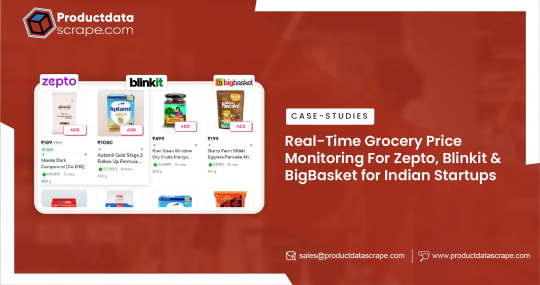
Introduction
India’s quick commerce boom has transformed how millions shop for groceries. To keep up with changing prices, offers, and hyperlocal stock availability, Indian startups are embracing Real-Time Grocery Price Monitoring For Zepto, Blinkit & BigBasket. Product Data Scrape helps these brands build competitive, real-time insights into grocery price shifts, discounts, and competitor tactics. By combining Scrape Real-Time Price Data from Zepto, Blinkit & BigBasket with robust tracking tools, startups now respond instantly to market moves and demand spikes. In this case study, discover how real-time price monitoring has powered smarter pricing, increased sales, and improved customer loyalty for India’s fastest-growing quick commerce brands.
The Client
An emerging grocery aggregator startup approached Product Data Scrape with one clear goal: outperform larger players by using reliable, granular price intelligence across India’s top grocery delivery apps. This client needed Real-Time Grocery Price Monitoring For Zepto, Blinkit & BigBasket to spot price drops, match competitor discounts, and adjust their own offers dynamically. With fierce local competition and daily pricing changes, it was no longer enough to rely on manual checks or outdated spreadsheets. The client also wanted to scale insights across multiple cities and store formats, covering essentials, fresh produce, and Gourmet Food Data. The need for a trusted partner who could deliver Real-Time Data Monitoring for Grocery Prices & Discounts led them to Product Data Scrape’s proven expertise. The client’s vision was clear: get real-time data or get left behind.
Key Challenges
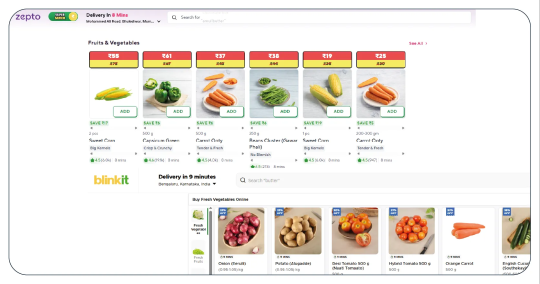
The client faced several challenges typical for India’s quick commerce and grocery tech startups. First, manual price checks on Zepto, Blinkit, and BigBasket were time-consuming and error-prone, missing daily promotions and location-specific discounts. Second, without a system to Scrape Real-Time Price Data from Zepto, Blinkit & BigBasket, they couldn’t confidently match or beat competitor offers, which led to lost customers. Third, the team struggled to handle huge volumes of SKU-level data with variations across cities, PIN codes, and product categories. They needed Real-Time Grocery Price Tracking from Zepto, Blinkit & BigBasket to feed their pricing engines and marketing tools automatically. Additionally, they lacked robust tools for Quick Commerce Grocery & FMCG Data Scraping, which meant missing insights on emerging neighborhood-level demand. They also required clean integrations with Real-Time Indian Grocery Price Scraping APIs , so their tech stack could automatically update pricing dashboards daily. Without dependable Grocery Price Monitoring Scraper For Zepto, Blinkit & BigBasket, their strategy was reactive instead of proactive. Staying competitive demanded a scalable solution to Extract Blinkit Grocery & Gourmet Food Data , Extract Bigbasket Product Data , and launch smarter promotions instantly.
Key Solutions
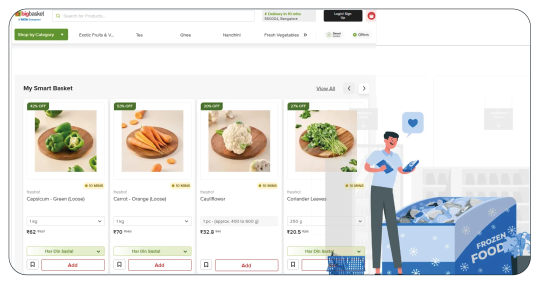
Product Data Scrape built a robust solution covering every pain point. We deployed dedicated crawlers to Scrape Real-Time Price Data from Zepto, Blinkit & BigBasket with 99% accuracy. The client gained city-level price feeds that updated hourly, fueling their dynamic pricing engine with precise SKU details and store-specific offers. Our team customized Zepto Grocery Data Scraping modules to capture neighborhood differences for quick commerce. Combined with Web Scraping Grocery Price Data, they could compare pricing trends, track discounts, and identify competitors’ loss leaders. To scale, we integrated Real-Time Indian Grocery Price Scraping APIs into the client’s dashboards, giving instant visibility into price gaps and fresh offers.
Product Data Scrape also activated Grocery & Supermarket Data Scraping Services for broader market mapping, including insights from smaller grocery stores and specialty listings. The client used our Grocery Data Scraping Services to enhance supply chain forecasting and inventory planning with a high-quality Grocery Store Dataset. Our tools helped them Scrape Grocery & Gourmet Food Data to spot premium product trends, boosting margins with curated assortments. Together, this complete solution turned chaotic market signals into actionable pricing strategies. Today, the client uses Product Data Scrape for continuous Grocery Price Monitoring Scraper For Zepto, Blinkit & BigBasket, plus robust Quick Commerce Grocery & FMCG Data Scraping to stay ahead in India’s competitive grocery space.
Client’s Testimonial
"Product Data Scrape transformed how we compete. Their Real-Time Grocery Price Monitoring For Zepto, Blinkit & BigBasket helps us adjust prices daily, match discounts, and win more loyal customers. Their data scraping quality and support are unmatched."
— Head of Growth, Leading Indian Quick Commerce Startup
Conclusion
Real-time grocery price tracking is no longer optional for India’s quick commerce brands — it’s mission-critical. This case study proves that Real-Time Grocery Price Monitoring For Zepto, Blinkit & BigBasket drives competitive advantage, sharper pricing, and smarter promotions. Product Data Scrape remains the trusted partner for startups that need powerful Grocery Price Monitoring Scraper For Zepto, Blinkit & BigBasket and ready-to-use insights that fuel growth. Get started with Product Data Scrape today and unlock your edge in India’s grocery market!
Unlock More Info>>>https://www.productdatascrape.com/real-time-grocery-price-monitoring-zepto-blinkit-bigbasket.php
#RealTimeGroceryPriceMonitoringForZeptoBlinkitAndBigBasket#ScrapeRealTimePriceDataFromZeptoBlinkitAndBigBasket#RealTimeDataMonitoringForGroceryPricesAndDiscounts#RealTimeGroceryPriceTrackingFromZeptoBlinkitAndBigBasket#RealTimeIndianGroceryPriceScrapingAPIs#QuickCommerceGroceryAndFMCGDataScraping#WebScrapingGroceryPriceData
0 notes
Text
🍟 Why QSRs Are Turning to Real-Time Delivery App Data for Smarter Pricing
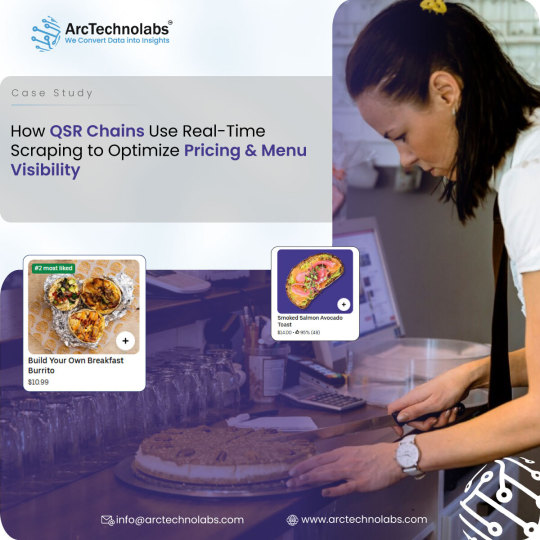
In the age of digital food delivery, pricing is no longer just about cost—it’s about context.
ArcTechnoLabs' latest analysis explores how scraping real-time data from delivery platforms (like Swiggy, Zomato, Uber Eats, etc.) helps quick-service restaurants (QSRs) implement dynamic pricing strategies to:
✅ Respond instantly to fluctuating delivery fees and competitor pricing
✅ Adjust menu prices based on demand, time slots, or region
✅ Improve operational margins without compromising customer satisfaction
✅ Track promo trends and benchmark performance across cities or delivery platforms
📊 “Brands using real-time QSR pricing insights reported up to 20% profit growth and 30% better alignment with local delivery market dynamics.”
💡 Whether you manage pricing, operations, growth, or analytics in the F&B, cloud kitchen, or delivery aggregator space, this deep dive is packed with strategic value.
#advancewebscrapingservices#webscrapingapiservices#mobileappscrapingservices#arctechnolabs#webscrapingservices#technology#india
0 notes
Text
🥗 Fuel Smarter Food Tech with Nutritional Data Scraping in 2025
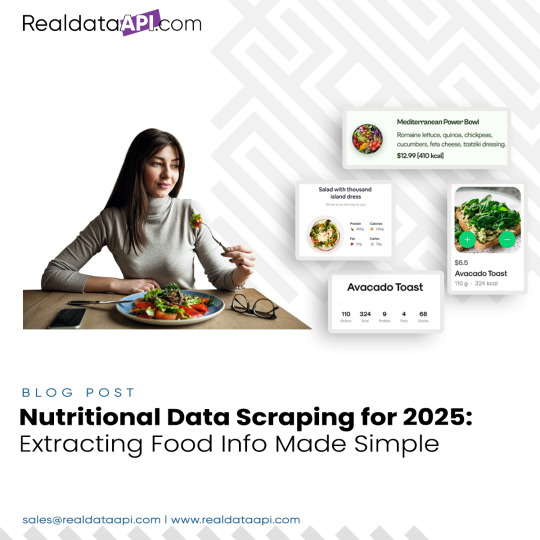
From health apps to grocery platforms, nutrition transparency is becoming a consumer expectation—not a luxury. With RealDataAPI’s Nutritional Data Scraping services, brands, healthtech platforms, and food delivery apps can extract structured food composition data at scale to drive better labeling, personalization, and compliance.
🔍 What You Can Extract:
● Nutrition facts: calories, macros, vitamins & allergens ● Ingredient breakdowns for packaged, restaurant & QSR items ● Data from food labels, online menus, and grocery listings ● Categorized output by brand, cuisine, food group & portion ● API, CSV, or JSON delivery for instant integration into apps & systems
📦 Whether you're a nutrition startup, grocery platform, health tracker, or wellness app—this scraper enables real-time food intelligence for 2025 and beyond.
📩 Contact us: [email protected]
0 notes
Text
Automating Restaurant Menu Data Extraction Using Web Scraping APIs
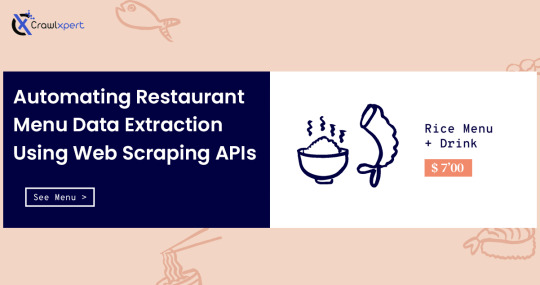
Introduction
The food and restaurant business sector is going very heavily digital with millions of restaurant menus being made available through online platforms. Companies that are into food delivery, restaurant aggregation, and market research require menu data on a real-time basis for competition analysis, pricing strategies, and enhancement of customer experience. Manually collecting and updating this information is time-consuming and a laborious endeavor. This is where web scraping APIs come into play with the automated collection of such information to scrape restaurant menu data efficiently and accurately.
This guide discusses the importance of extracting restaurant menu data, how web scraping works for this use case, some challenges to expect, the best practices in dealing with such issues, and the future direction of menu data automation.
Why Export Restaurant Menu Data?
1. Food Delivery Service
Most online food delivery services, like Uber Eats, DoorDash, and Grubhub, need real-time menu updates for accurate pricing or availability. With the extraction of restaurant menu data, at least those online platforms are kept updated and discrepancies avoidable.
2. Competitive Pricing Strategy
Restaurants and food chains make use of web scraping restaurant menu data to determine their competitors' price positions. By tracking rival menus, they will know how they should price their products to remain competitive in the marketplace.
3. Nutritional and Dietary Insights
Health and wellness platforms utilize menu data for dietary recommendations to customers. By scraping restaurant menu data, these platforms can classify foods according to calorie levels, ingredients, and allergens.
4. Market Research and Trend Analysis
This is the group of data analysts and research firms collecting restaurant menu data to analyze consumer behavior about cuisines and track price variations with time.
5. Personalized Food Recommendations
Machine learning and artificial intelligence now provide food apps with the means to recommend meals according to user preferences. With restaurant menu data web scraping, food apps can access updated menus and thus afford personalized suggestions on food.
How Web Scraping APIs Automate Restaurant Menu Data Extraction
1. Identifying Target Websites
The first step is selecting restaurant platforms such as:
Food delivery aggregators (Uber Eats, DoorDash, Grubhub)
Restaurant chains' official websites (McDonald's, Subway, Starbucks)
Review sites (Yelp, TripAdvisor)
Local restaurant directories
2. Sending HTTP Requests
Scraping APIs send HTTP requests to restaurant websites to retrieve HTML content containing menu information.
3. Parsing HTML Data
The extracted HTML is parsed using tools like BeautifulSoup, Scrapy, or Selenium to locate menu items, prices, descriptions, and images.
4. Structuring and Storing Data
Once extracted, the data is formatted into JSON, CSV, or databases for easy integration with applications.
5. Automating Data Updates
APIs can be scheduled to run periodically, ensuring restaurant menus are always up to date.
Data Fields Extracted from Restaurant Menus
1. Restaurant Information
Restaurant Name
Address & Location
Contact Details
Cuisine Type
Ratings & Reviews
2. Menu Items
Dish Name
Description
Category (e.g., Appetizers, Main Course, Desserts)
Ingredients
Nutritional Information
3. Pricing and Discounts
Item Price
Combo Offers
Special Discounts
Delivery Fees
4. Availability & Ordering Information
Available Timings
In-Stock/Out-of-Stock Status
Delivery & Pickup Options
Challenges in Restaurant Menu Data Extraction
1. Frequent Menu Updates
Restaurants frequently update their menus, making it challenging to maintain up-to-date data.
2. Anti-Scraping Mechanisms
Many restaurant websites implement CAPTCHAs, bot detection, and IP blocking to prevent automated data extraction.
3. Dynamic Content Loading
Most restaurant platforms use JavaScript to load menu data dynamically, requiring headless browsers like Selenium or Puppeteer for scraping.
4. Data Standardization Issues
Different restaurants structure their menu data in various formats, making it difficult to standardize extracted information.
5. Legal and Ethical Considerations
Extracting restaurant menu data must comply with legal guidelines, including robots.txt policies and data privacy laws.
Best Practices for Scraping Restaurant Menu Data
1. Use API-Based Scraping
Leveraging dedicated web scraping APIs ensures more efficient and reliable data extraction without worrying about website restrictions.
2. Rotate IP Addresses & Use Proxies
Avoid IP bans by using rotating proxies or VPNs to simulate different users accessing the website.
3. Implement Headless Browsers
For JavaScript-heavy pages, headless browsers like Puppeteer or Selenium can load and extract dynamic content.
4. Use AI for Data Cleaning
Machine learning algorithms help clean and normalize menu data, making it structured and consistent across different sources.
5. Schedule Automated Scraping Jobs
To maintain up-to-date menu data, set up scheduled scraping jobs that run daily or weekly.
Popular Web Scraping APIs for Restaurant Menu Data Extraction
1. Scrapy Cloud API
A powerful cloud-based API that allows automated menu data scraping at scale.
2. Apify Restaurant Scraper
Apify provides pre-built restaurant scrapers that can extract menu details from multiple platforms.
3. Octoparse
A no-code scraping tool with API integration, ideal for businesses that require frequent menu updates.
4. ParseHub
A flexible API that extracts structured restaurant menu data with minimal coding requirements.
5. CrawlXpert API
A robust and scalable solution tailored for web scraping restaurant menu data, offering real-time data extraction with advanced anti-blocking mechanisms.
Future of Restaurant Menu Data Extraction
1. AI-Powered Menu Scraping
Artificial intelligence will improve data extraction accuracy, enabling automatic menu updates without manual intervention.
2. Real-Time Menu Synchronization
Restaurants will integrate web scraping APIs to sync menu data instantly across platforms.
3. Predictive Pricing Analysis
Machine learning models will analyze scraped menu data to predict price fluctuations and customer demand trends.
4. Enhanced Personalization in Food Apps
By leveraging scraped menu data, food delivery apps will provide more personalized recommendations based on user preferences.
5. Blockchain for Menu Authentication
Blockchain technology may be used to verify menu authenticity, preventing fraudulent modifications in restaurant listings.
Conclusion
Automating the extraction of restaurant menus from the web through scraping APIs has changed the food industry by offering real-time prices, recommendations for food based on liking, and analysis of competitors. With advances in technology, more AI-driven scraping solutions will further improve the accuracy and speed of data collection.
Know More : https://www.crawlxpert.com/blog/restaurant-menu-data-extraction-using-web-scraping-apis
#RestaurantMenuDataExtraction#ScrapingRestaurantMenuData#ExtractRestaurantMenus#ScrapeRestaurantMenuData
0 notes
Text
Uber Eats vs DoorDash: Real-Time Food Price Tracking Across U.S.
Uber Eats vs DoorDash: Real-Time Price Monitoring Across U.S. Cities
In the fiercely competitive food delivery industry, pricing intelligence is a strategic advantage. With platforms like Uber Eats and DoorDash vying for dominance in the U.S., understanding how their pricing strategies differ across cities can help restaurants, consumers, and startups make smarter decisions. At Food Data Scrape, we specialize in real-time food price monitoring, helping clients compare menus, delivery fees, surge pricing, and promotional discounts.
This case study dives deep into Uber Eats vs DoorDash price analysis across major U.S. cities. We collected live data from over 50,000 menu listings in 10 metro markets, comparing key price metrics using our proprietary food delivery scraping engine.Download Now
Why Real-Time Price Monitoring Matters
Consumers don’t just care about food quality—they care about price transparency. For delivery platforms, pricing is dynamic and influenced by multiple variables:
Restaurant base pricing
Platform commission structures
Service & delivery fees
Surge pricing
Location-specific promotions
For restaurant chains and investors, price benchmarking across platforms enables better competitive analysis, menu optimization, and market positioning.
Data Collection Methodology
At Food Data Scrape, we built an automated system to extract, normalize, and store real-time pricing data across platforms. Our system used the following approach:
Target Platforms: Uber Eats and DoorDash
Cities Monitored: New York, Los Angeles, Chicago, Houston, Phoenix, Philadelphia, San Antonio, San Diego, Dallas, San Jose
Frequency: Every 4 hours for 30 days
Metrics Tracked: Base item price, delivery fee, service fee, surge fee, promo discounts, taxes
Sample Data Extract (Panda Express - Chicken Bowl):
Key Findings Across 10 U.S. Cities
1. Uber Eats is Often More Expensive—But Not Always
Across all cities, Uber Eats had a higher average total cost in 7 out of 10 cities. However, when surge fees or promo codes kicked in, DoorDash could become costlier.
2. DoorDash Leads in Promo Discounts
DoorDash offered more frequent and larger discounts. Over the 30-day scrape, we found that:
DoorDash provided promo codes in 42% of cases.
Uber Eats offered promos in only 28% of monitored cases.
3. Delivery Fees Fluctuate Hourly
We observed high volatility in delivery fees, especially during dinner hours (6–9 PM). In cities like Chicago and Houston, DoorDash had lower fees during off-peak, but Uber Eats spiked less aggressively during surges.
Example:
Houston, 8 PM
Uber Eats Delivery: $4.29
DoorDash Delivery: $5.99
4. Regional Pricing Disparities Are Significant
A Chicken Bowl at Panda Express showed a 19% price difference (total cost) between New York and Phoenix on Uber Eats, even though the base price was the same.
City-by-City Breakdown
New York City
Uber Eats Total Avg: $16.89
DoorDash Total Avg: $15.32
Uber Eats more expensive in 73% of listings.
Los Angeles
Both platforms priced similarly, but DoorDash offered more coupons.
Chicago
Uber Eats used surge pricing more frequently on weekends.
Phoenix
DoorDash consistently undercut Uber Eats by $1–$2 per item.
San Diego
Uber Eats had lower base prices, but added fees made them costlier.
Visual Snapshot of Price Trends
Insights for Restaurants & Startups
1. Use Dynamic Pricing to Compete
Restaurants partnering with both platforms should optimize pricing and promotions based on real-time trends. Food Data Scrape can notify you when a competitor adjusts prices or fees.
2. Monitor Promotions in Real Time
Our clients use promo alerts to sync in-app offers with high-traffic hours—helping boost margins while staying competitive.
3. Optimize Menu Placement
Understanding item-level price differences can help restaurants adjust menus to be more appealing. A $0.50 difference can significantly shift conversion.
Challenges Faced During Scraping
While collecting live data, Food Data Scrape had to tackle:
Anti-bot protections: We implemented rotating proxies and captcha-solving systems.
Geo-targeted results: Delivery availability and fees change by ZIP code.
Promo code randomness: Some discounts are targeted; we used logged-in sessions to replicate user views.
How Food Data Scrape Solves the Problem
We’ve developed a robust system that offers:
Real-time data APIs for Uber Eats and DoorDash
Custom alerts on competitor pricing
City-level breakdowns for chain and franchise analysis
Historical price comparison dashboards
Whether you're a food startup, restaurant chain, or investor, our platform empowers you to make data-backed pricing decisions.
Client Success Story: Regional QSR Brand
A regional fast-casual brand with 50+ locations across the Southwest used Food Data Scrape to track Uber Eats and DoorDash fees in Phoenix, Las Vegas, and Albuquerque. After identifying that Uber Eats was charging a higher service fee in Phoenix (average +$1.20), the chain adjusted its DoorDash pricing to appear more competitive—boosting DoorDash orders by 18% in 3 weeks.
Future Roadmap: Beyond Price Monitoring
Our long-term vision includes:
AI-based price prediction models
Real-time delivery time tracking
Sentiment analysis of delivery reviews
Cross-platform menu listing comparison
Client’s Testimonial
"Partnering with Food Data Scrape has completely transformed how we track delivery pricing. Their real-time insights helped us spot hidden fees, optimize our menu strategy, and stay ahead of competitors across Uber Eats and DoorDash. Within weeks, we saw a measurable boost in orders and customer satisfaction. Their platform is fast, reliable, and essential for any restaurant serious about pricing intelligence."
— VP of Marketing, Southwest QSR Chain
Conclusion
Price transparency in food delivery is no longer optional—it’s a necessity. With two major players like Uber Eats and DoorDash battling for consumer loyalty, the ability to analyze pricing in real-time unlocks a new level of competitive intelligence.
Food Data Scrape is leading the way in transforming how restaurants, consumers, and startups monitor food delivery prices and make smarter, faster decisions.
Source>> https://www.fooddatascrape.com/ubereats-vs-doordash-real-time-price-monitoring-usa.php
#RealTimePriceMonitoringAcrossUSCities#UberEatsvsDoorDashPriceAnalysis#RealTimeDataAPIsforUberEatsandDoorDash#FoodDeliveryIndustry
1 note
·
View note
Text
Restaurant Menu Scraping Services—Extract Food Menu Data
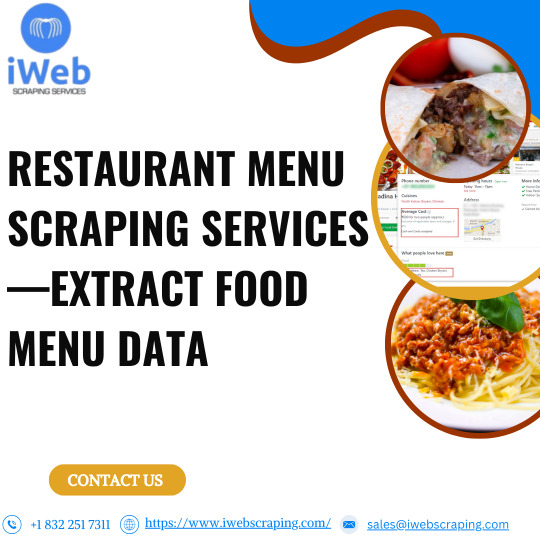
Access detailed restaurant menu data effortlessly with our professional restaurant menu scraping services. Whether you’re building a food delivery app, conducting market research, or managing a restaurant aggregator platform, we help extract structured data directly from restaurant websites. Gather essential information such as dish names, ingredients, pricing, dietary tags, categories, and images — all in a clean, ready-to-use format.
Our automated solutions ensure accurate data collection across thousands of listings, helping you keep menus updated with the latest entries and pricing. From multi-location franchises to local diners, our scraping service supports a wide variety of restaurant platforms. With real-time updates and reliable output formats like CSV, JSON, or Excel, your team can make smarter decisions, faster.
Leverage data to track food trends, analyze competitors, or enhance your digital menu offerings with precision. iWeb scraping ensures secure and efficient extraction — no manual effort needed. Scale your food-related operations confidently with structured, reliable restaurant menu data.
0 notes
Text
Talabat Review Scraping for Restaurant Reputation Monitoring in UAE
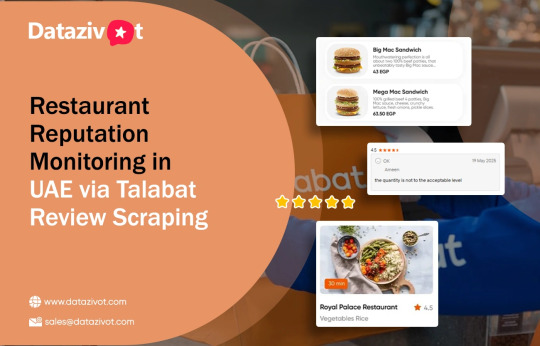
Why Real-Time Reviews Matter in the UAE Food Delivery Market
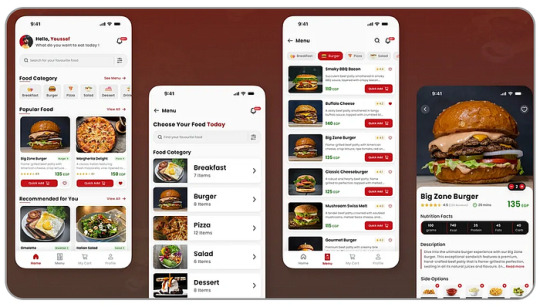
In the fast-moving food delivery landscape of the UAE — covering Dubai, Abu Dhabi, Sharjah, and beyond — your online reputation is your currency.
With platforms like Talabat dominating food orders, a single bad review can hurt more than your rating — it can tank your visibility, impact repeat orders, and damage word-of-mouth credibility.
So how do you stay ahead?
By monitoring reviews in real time — city by city, dish by dish.
At Datazivot, we enable UAE restaurants to do just that, through intelligent Talabat review scraping. The result? Actionable insights on food quality, packaging hygiene, delivery experience, and customer sentiment — right down to each outlet or dish.
Why Talabat Reviews Are a Goldmine for UAE Restaurants
As the UAE’s leading food delivery app, Talabat is a review hub for:
Fine dining spots and cloud kitchens
QSR chains and family-run cafes
Hyperlocal delivery-first outlets
And here’s the challenge:
A low Talabat rating in Dubai can bury you in search results
Keywords like “cold,” “late,” “missing item” can quickly go viral on social media
With review scraping, you can:
Detect quality drops in specific cities or branches
Track packaging, hygiene, and portion complaints
Monitor competitor ratings in real time
Preempt refund spikes and social media blowups
What Datazivot Extracts from Talabat Reviews
Ratings: Spot underperforming SKUs or outlets
Review Text: Sentiment analysis to detect praise or problems
Location: Compare performance across cities and zones
Date/Time: Identify service issue patterns, such as weekend spikes
Dish Name: Track food-specific feedback trends
Example: What Real UAE Customers Are Saying
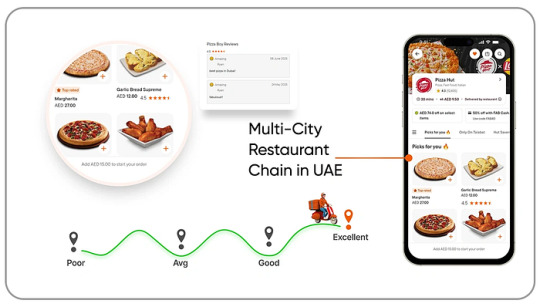
Dubai / Shawarma Star / Chicken Wrap
Rating: 1.0
Review: “Meat was dry and cold. Took 45 mins.”
Issue: Delivery Delay
Abu Dhabi / Pizza Crust House / Pepperoni Pizza
Rating: 5.0
Review: “Arrived hot, crispy edges, great taste!”
Issue: Positive Sentiment
Sharjah / Veggie Delight Hub / Hummus Bowl
Rating: 3.0
Review: “Fresh but too little quantity.”
Issue: Portion Complaint
Ajman / Tandoori Town / Butter Chicken
Rating: 2.0
Review: “Spilled all over. Weak packaging.”
Issue: Packaging Issue
Case Study: Multi-City Monitoring for a UAE Restaurant Chain
Client: EatRight Co. (healthy food chain) Challenge: Sudden rating drops in Sharjah and Dubai
What We Did:
Scraped over 20,000 Talabat reviews in 30 days
Flagged high frequency of keywords: “late,” “missing items,” “small portions”
Discovered that 70% of complaints in Sharjah occurred after 7 PM
Actions Taken:
Added more evening staff in Sharjah
Adjusted portion sizes based on competitive benchmarking
Upgraded to premium delivery partners
Results:
Ratings increased from 3.5 to 4.2 within 45 days
Complaints dropped by 40%
Repeat orders on Talabat improved significantly
Top Complaint Drivers in UAE Talabat Reviews (2025)
Late Delivery: 26% — Most common in Dubai, Sharjah, Abu Dhabi
Cold Food: 18% — Especially in Dubai and Ajman
Wrong or Missing Items: 14% — Prominent in Sharjah and Fujairah
Poor Packaging: 12% — Major issue in Abu Dhabi and Ras Al Khaimah
Small Portions: 9% — Reported across the UAE
Inside the Datazivot Real-Time Review Dashboard
Sentiment Heatmaps: Visualize rating trends across UAE cities
SKU and Dish Tracker: Identify which items generate the most praise or complaints
1-Star Review Alerts: Instant notifications for review spikes
Location Filters: Analyze performance by city or outlet
CSV/API Export: Integrate review data with internal reporting tools
Competitive Intelligence: Pizza Chains in Dubai
Pizza Supreme
Average Rating: 4.4
Common Complaints: “Soggy base,” “missing dip”
Repeat Mentions: 12%
Cheezy Crust
Average Rating: 3.8
Common Complaints: “Cold,” “not as described”
Repeat Mentions: 28%
Urban Pizza Hub
Average Rating: 4.1
Common Complaints: “Small slices,” “too spicy”
Repeat Mentions: 17%
How Restaurant Groups Use Talabat Review Data Strategically
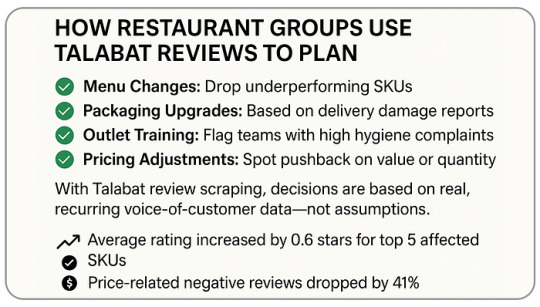
Menu Optimization: Remove or rework underperforming SKUs
Packaging Upgrades: Act on delivery damage feedback
Outlet Training: Focus on branches with hygiene or service issues
Pricing Adjustments: Identify customer pushback on perceived value
By using Talabat review scraping, restaurant decisions are driven by real, recurring customer feedback — not assumptions.
Why UAE Restaurants Choose Datazivot
Multi-City Monitoring: Supports Dubai, Abu Dhabi, Sharjah, and other major cities
Arabic + English Sentiment Analysis: Understand reviews in both languages
Mobile Alerts: Receive updates via SMS or Slack
Visual Dashboards: Shareable with marketing, CX, and ops teams
Daily Data Refresh: Capture new reviews within 24 hours
Final Thoughts:
Don’t Let One Bad Review Hurt Your Entire Brand
In the UAE, one unresolved Talabat complaint can cost you hundreds of future orders. But one well-managed issue can turn negative feedback into long-term customer loyalty.
With Datazivot’s Talabat review scraping, restaurants can:
Proactively address reputation issues
Spot underperforming dishes or outlets
Benchmark against city-based competitors
Turn customer reviews into actionable business insights
Originally Published By https://www.datazivot.com/restaurant-reputation-monitoring-uae-talabat-review-scraping.php
#CloudKitchenUAE#BrandMonitoring#DubaiFoodTrends#FoodDeliveryTrends#FoodDeliveryUAE#SentimentAnalysis#TalabatScraping#UAERestaurants#SarjahRestaurants
0 notes
Text
⏰ What Makes It Essential to #ExtractRestaurantHoursData from the Baemin App Today?

In today’s #HyperCompetitiveFoodDelivery landscape, timing is everything—literally.
Understanding when restaurants are open, closed, or operating at peak hours directly impacts delivery performance, customer satisfaction, and revenue optimization.
At iWeb Data Scraping, we help you extract accurate and up-to-date #RestaurantHoursData from the Baemin app, enabling businesses to make more informed and profitable decisions.
🚀 Who Benefits from This Data?
• Food delivery aggregators
• Logistics & route planners
• Restaurant consultants
• Market research & analytics teams
• AI-based delivery or recommendation platforms
With #RealTimeAccess to restaurant operating hours, you gain the insights needed to streamline logistics, increase order efficiency, and deliver a better dining experience-right when customers expect it.
🔗 Learn how iWeb Data Scraping powers smarter food delivery strategies:
0 notes